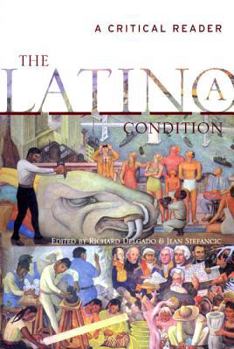The Latino/A Condition: A Critical Reader
Select Format
Select Condition 
Book Overview
All too often, groups who do not effectively define themselves find that others assume the power to explain them. Until recently, this has certainly been the case with American Latinos/as, as evidenced by demeaning media stereotypes and the groups's near-invisibility in U.S. history texts. Indeed, as the demise of the Soviet empire shifted America's national anxieties to domestic irritants, images of Latinos/as changed for the worse. Immigration reform acts in 1965 and 1986 brought millions of new immigrants from Latin American countries. By the end of the 1980s, their presence had become vexing to many. English-only movements sprang up. Bilingual education came under attack. Movements to close the border gained momentum. Now, Latinos/as are speaking back. The Latino Condition brings together some of these new voices, and some of the pioneers, in law, sociology, history, politics, and literature. This pathbreaking volume addresses such questions as: Who exactly is a Latino/a? Who is Hispanic? Who is Chicano/a? How did Spanish-speaking people come to the United States? Should the United States try to control Latino/a immigration and is this even possible? How has "the silent minority" been stereotyped by popular culture? Why don't traditional civil rights remedies work for Latinos/as? Is assimilation possible, or even desirable, for all Latinos/as? What makes for conflict between Latinos/as and other racial groups? Are Latinos/as a race or an ethnicity? Should Latino/a children be taught in Spanish? What can border theory tell us about culture, language, and power?
Format:Paperback
Language:English
ISBN:0814718957
ISBN13:9780814718957
Release Date:May 1998
Publisher:New York University Press
Length:715 Pages
Weight:2.82 lbs.
Dimensions:1.3" x 7.1" x 9.8"
Customer Reviews
2 ratings
Excellent book, but know in advance....
Published by Thriftbooks.com User , 23 years ago
Excellent book, but know in advance that this book is heavily skewed toward legal topics and lawyer authors. While much of the legal writing is dense for lay readers, it is often well worth the effort. The selections authored by Margaret Montoya, Kevin Johnson, editor Richard Delgado, and non-attorney Gloria Anzaldua were the very best of this remarkably well-written anthology.
informative
Published by Thriftbooks.com User , 25 years ago
This book answers a lot of questions about the Latino culture, experience, past, present and future. Some essays tell stories, while others are plain facts. This book has about 670 pages, yet it is a fast and informative read where you can't put the book down. It is organized by section of topic and gives suggested reading lists at the end of each chapter. A good introductory to Latin American studies, historically, culturally, and sociologically. It gives a lot of information for the price, you will not regret buying this book.





